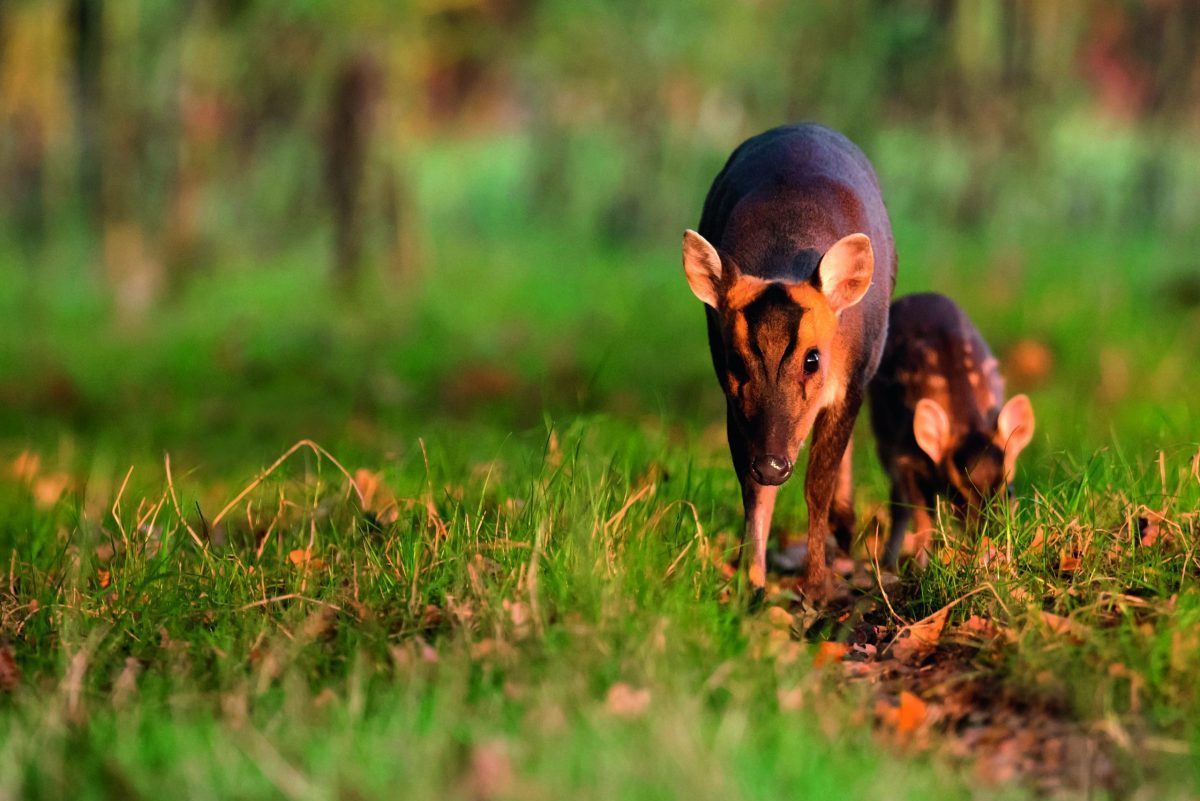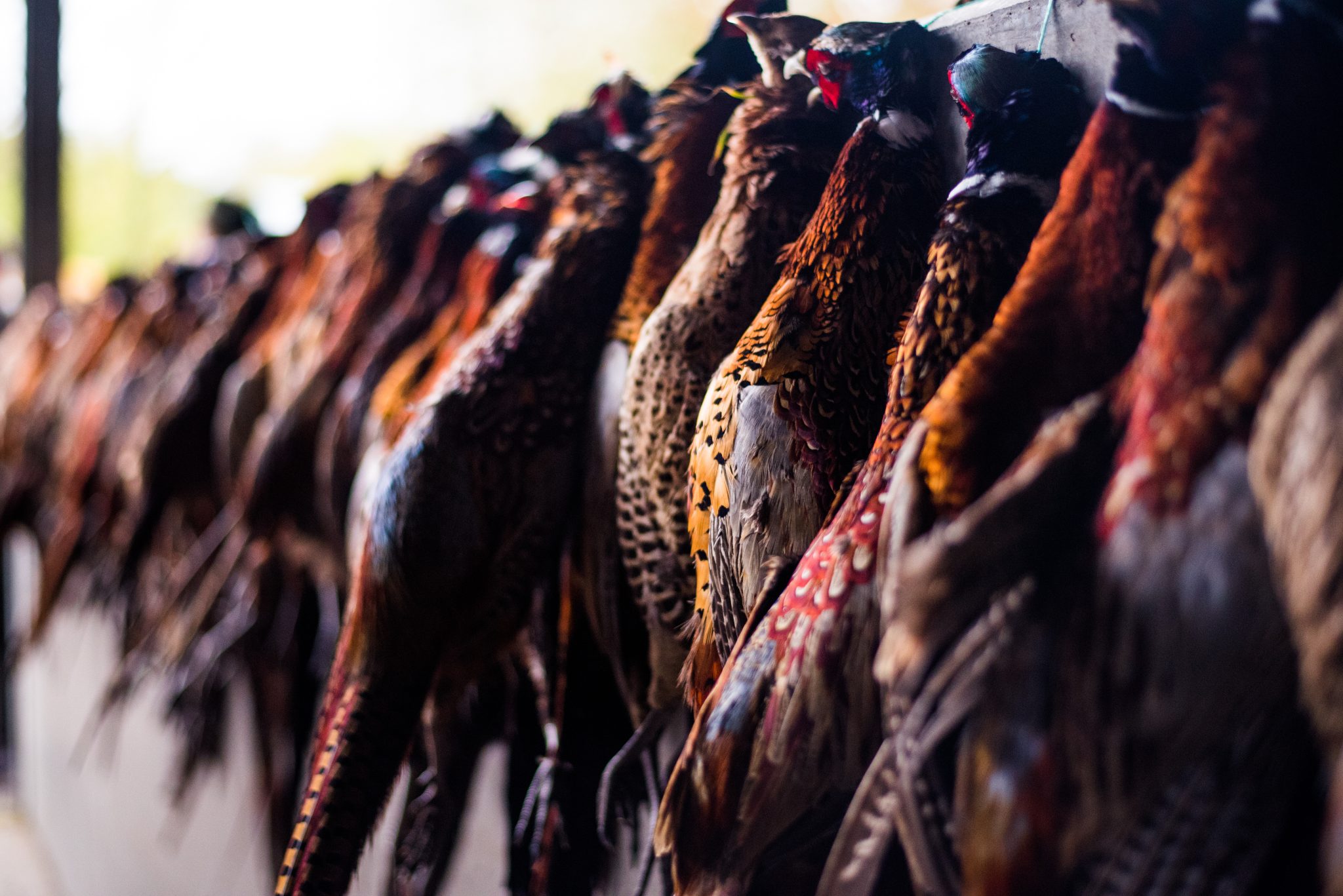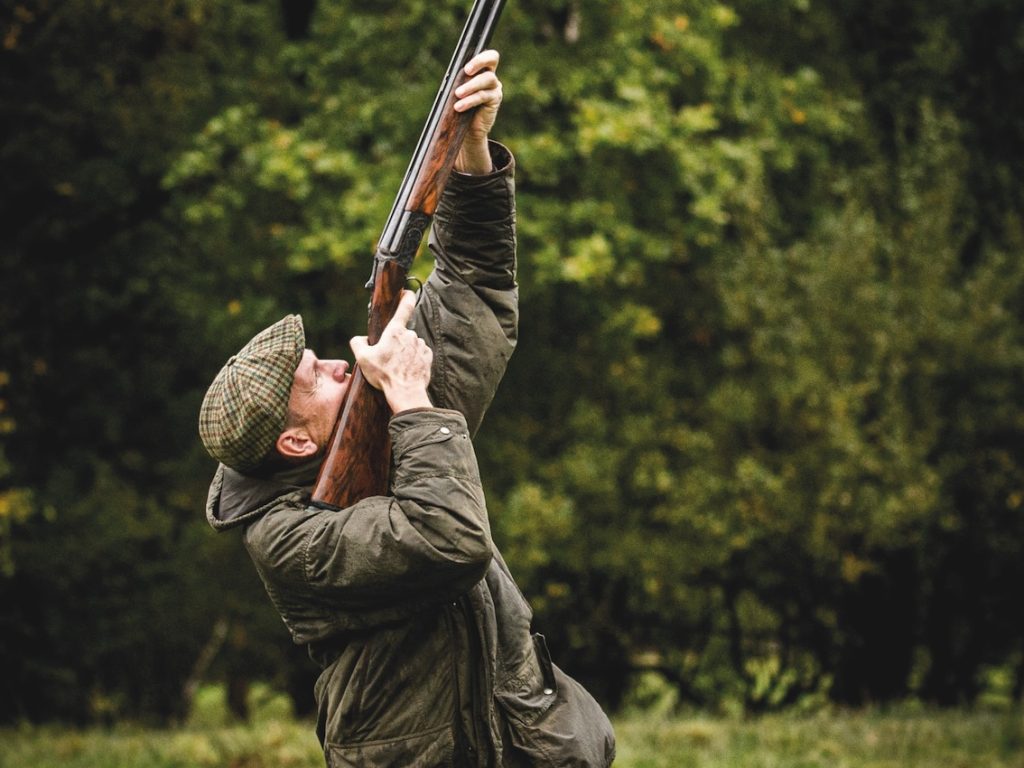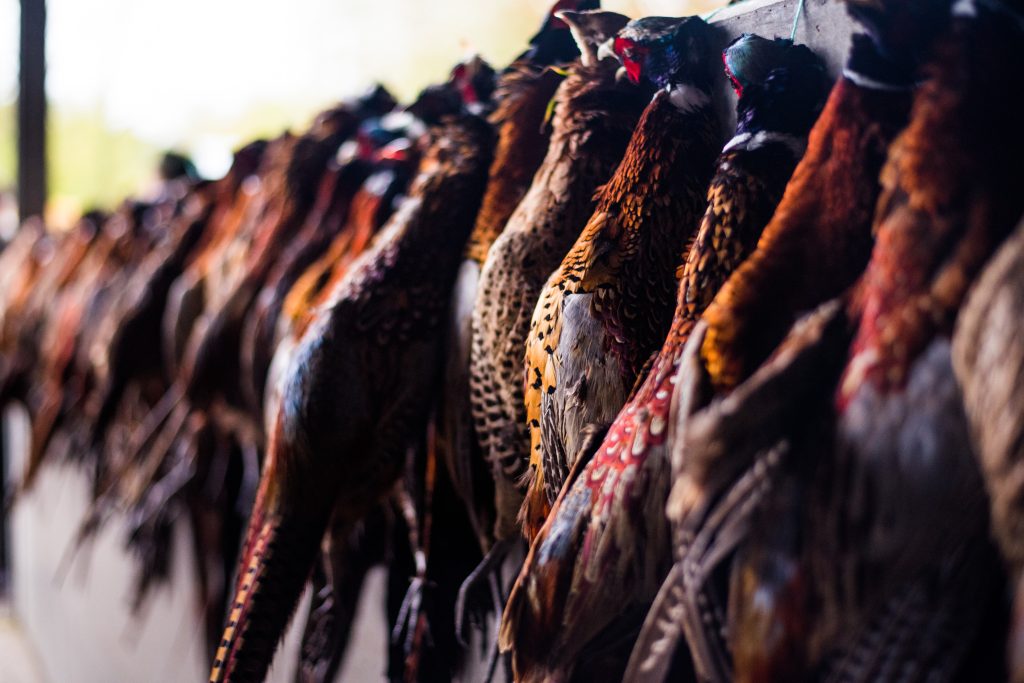Win CENS ProFlex DX5 earplugs worth £1,149 – enter here
Muntjac – everything you need to know

Among the world’s most ancient groups of deer species, muntjac walked the earth during the Miocene epoch along with mastodons and smilodons — sabre-tooth tigers — in essentially the same form as we know them today.
Although they were present in Europe 15 million years ago, in more recent times muntjac have been native to east Asia. There are 12 species, the newest being the leaf muntjac, described to science as recently as 1997. It is not impossible that more species await discovery in the forests of Vietnam, Cambodia, Laos or Burma (now Myanmar).
The muntjac we in Britain know so well, however, is Muntiacus reevesi or Reeves’s muntjac, which is native to eastern China and was named after John Russell Reeves, a tea inspector with the British East India Company in Canton and an eminent naturalist.
I described how Reeves first brought a pair of these deer to the London Zoological Society in 1838 (Little deer, big challenge, 9 March) and how they subsequently escaped from captivity or were deliberately released from collections at Woburn and various other places in the first half of the 20th century, making them one of Britain’s most successful non-native mammals.
Sporadic
Today muntjac are to be found throughout England, south of a line from the Humber to the Dee, with the exception of east Kent and parts of Devon and Cornwall. They are present in south Wales and there are sporadic occurrences as far north as Northumberland, Cumbria and south-west Scotland. In 2011 muntjac were recorded in Northern Ireland.
Standing around 18in (45cm) at the shoulder and weighing up to 33lb (15kg), a mature muntjac buck is about the same size as a large labrador, the doe being somewhat smaller and lighter. Both sexes have a chestnut-brown summer coat and a rich creamy underside. The tail is also white underneath and is held erect
in alarm when the animal takes flight.
Apart from their small size, muntjac are easily distinguishable from other deer by their hunched appearance, their haunches being high and shoulders low.
They are constantly on the move, feeding as they walk and hesitating only long enough to take a bite before continuing on their way. The buck has antlers that project from pedicles that extend from bony ridges on the skull. The tips of the antlers curve to a length of up to 4in (10cm) and in the mature buck there is a secondary brow point that, in an exceptional animal, can reach about ½in (1cm).
Bucks have long, curved tusks that project downwards from the upper jaw with a razor-sharp rear edge. They are fearsome weapons in territorial fights between rival bucks and can inflict deep lacerations and even blindness. When cornered, a muntjac may attack other animals such as dogs and a cut from the tusks of an aggressive muntjac can be fatal.
Introduced to Britain in 1838, muntjac have extended their range and are found across the country
Given that they are natives of dense forest, it is not surprising that muntjac communicate substantially by scent and sound, the repeated bark of a territorial buck now being a familiar sound in the woodlands of southern and eastern England at dawn or on a still, starlit night.
When geography and wind direction permit, stalking by sound into a barking muntjac is one of the most challenging and exciting ways of hunting these little deer. This strategy has produced some of my most memorable moments in pursuit of muntjac. They will also bark in alarm and the single sharp bark from inside a bramble thicket is the clearest indication that an approaching deerstalker has been rumbled.
I shoot them from high seats and stalk them on foot, often using a blend of both strategies. I sit tight for the first hour until the light is up, then stalk the woods, for they are less crepuscular than other deer and on the move late into the morning.
They can also be tough little critters to put down. The law permits them to be shot with a rifle with a calibre not less than .220 and a bullet no less than 50-gr, producing 1,000ft/lb. This allows a number of .22 centrefire cartridges to be used. I favour .243, especially when stalking where there is also the chance of encountering larger species.
Open ground
Rarely will you see muntjac far from woodland, thicket or hedgerow. Though they will cross open ground to transit between neighbouring woods, they much prefer to stay in close proximity to rough cover of some sort. They are, however, adept at exploiting shrubberies, suburban gardens and roadside plantings close to large cities.
This has contributed greatly to the muntjac’s ability to expand their range, as has the fact that a muntjac doe can produce her single fawn at any time of the year and will come into oestrus and be ready to mate within a day or so of giving birth. As a result, the mature doe is almost constantly pregnant.
While there is no close season and muntjac of both sexes may be shot all year round, in practice they are increasingly difficult to spot once the leaf is on the tree and the ground vegetation has grown up. I take a break from muntjac stalking from mid-May until after harvest, when the field margins are visible once more.
The muntjac’s diet includes ivy and bramble, coppice regrowth and wild flowers, so a high density of the deer can cause considerable damage by browsing the low-growing forest floor vegetation. Muntjac are also adept at stripping the leaves from tall saplings, which they do by walking over the stems and bending them to the ground, to reach the upper foliage.
Over time, continued browsing by muntjac will change the structure of the woodland habitat considerably and this has been shown to have an impact on the presence of important woodland birds such as nightingales.
As a non-native invasive species with a penchant for browsing saplings, herbaceous shoots, bluebells and orchids, it is perhaps not surprising that the muntjac has incurred the wrath of foresters, gardeners and conservationists alike. Indeed, it is regarded in some quarters as little more than a pest.
Once you have shot a muntjac, extraction is a doddle, though skinning the beast can be difficult
This, however, is where I must beg to differ. While I entirely acknowledge the need to manage this widespread and prolific deer species, I prefer to dwell on its positive qualities.
First and foremost, the muntjac is a hugely challenging and absorbing quarry to hunt. A small target that is hard to spot before it spots you, a muntjac is almost always on the move, requiring fast, accurate shooting. There is rarely time to observe at leisure through binoculars in order to check sex, pregnancy status or trophy quality — muntjac shooting invariably demands that you get straight on to your target and make a final verification through the riflescope.
Having shot your muntjac, extraction of the carcass is a doddle, even for a stalker of advancing years. There is no horrendous dragging, no need for quad bikes or winches, just a quick lift into the back of the truck.
Exciting
Muntjac are here for the long term and the fact that these little deer have spread so widely has brought exciting sporting opportunities to the doorstep of virtually every deerstalker across southern England.
Granted, they are not the easiest of beasts to skin, but if you can butcher a hare, you can butcher a muntjac, and muntjac venison is superb eating. Indeed, many authorities regard it as the best of all. Being a small animal, its fillets and haunches are finely grained and, because there is no rut, the venison is reliably delicious throughout the year. Whether in a warming winter casserole or sizzling on a summer barbecue, the little muntjac really is a treat to eat.
Related Articles
Get the latest news delivered direct to your door
Subscribe to Shooting Times & Country
Discover the ultimate companion for field sports enthusiasts with Shooting Times & Country Magazine, the UK’s leading weekly publication that has been at the forefront of shooting culture since 1882. Subscribers gain access to expert tips, comprehensive gear reviews, seasonal advice and a vibrant community of like-minded shooters.
Save on shop price when you subscribe with weekly issues featuring in-depth articles on gundog training, exclusive member offers and access to the digital back issue library. A Shooting Times & Country subscription is more than a magazine, don’t just read about the countryside; immerse yourself in its most authoritative and engaging publication.







